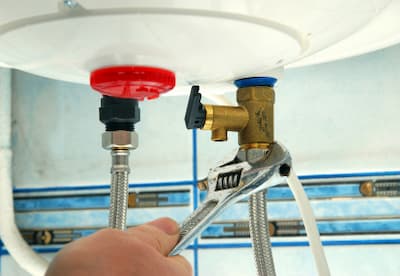Best Practices for Maintaining Your Home's Hot Water SystemEasy Guide to Maintaining Your Home's Hot Water System
Best Practices for Maintaining Your Home's Hot Water SystemEasy Guide to Maintaining Your Home's Hot Water System
Blog Article
Do you find yourself interested in additional info on How to Maintain a Hot Water Heater in a Few Simple Steps?

Hot water is important for daily convenience, whether it's for a rejuvenating shower or cleaning meals. To ensure your hot water system runs efficiently and lasts longer, normal upkeep is vital. This short article offers useful tips and insights on just how to keep your home's warm water system to prevent interruptions and costly repairs.
Intro
Preserving your home's hot water system could seem challenging, however with a few straightforward steps, you can ensure it runs efficiently for many years to come. This overview covers everything from understanding your warm water system to DIY maintenance pointers and understanding when to call in specialist help.
Relevance of Preserving Your Warm Water System
Routine maintenance not just extends the life expectancy of your hot water system however also guarantees it operates effectively. Neglecting upkeep can lead to reduced efficiency, higher power expenses, and even early failure of the system.
Indicators Your Warm Water System Needs Upkeep
Understanding when your warm water system requires attention can protect against major concerns. Watch out for signs such as irregular water temperature, unusual sounds from the heating unit, or rusty water.
Purging the Water Heater
Purging your water heater gets rid of sediment build-up, improving effectiveness and lengthening its life.
Checking and Changing Anode Rods
Anode poles prevent rust inside the container. Examining and changing them when worn is critical.
Complex Problems Calling For Specialist Help
Examples consist of significant leaks, electric problems, or if your water heater is continually underperforming.
Regular Specialist Maintenance Advantages
Specialist upkeep can include detailed inspections, tune-ups, and guaranteeing conformity with safety and security standards.
Examining and Changing Temperature Level Setups
Readjusting the temperature level setups ensures ideal efficiency and safety.
DIY Tips for Maintenance
You can do several maintenance jobs on your own to maintain your warm water system in top condition.
Looking for Leakages
Routinely examine pipelines and links for leaks, as these can result in water damages and greater costs.
Understanding Your Hot Water System
Before diving right into upkeep tasks, it's helpful to understand the basic components of your hot water system. Typically, this includes the water heater itself, pipes, anode rods, and temperature controls.
Regular Monthly Upkeep Tasks
Routine regular monthly checks can assist catch minor problems before they escalate.
Testing Pressure Relief Valves
Testing the stress safety valve guarantees it works properly and stops extreme pressure build-up.
Protecting Pipes
Insulating warm water pipes reduces warmth loss and can conserve energy.
When to Call a Specialist
While DIY upkeep is helpful, some problems require professional expertise.
Verdict
Normal maintenance of your home's hot water system is essential for effectiveness, long life, and expense savings. By complying with these pointers and understanding when to seek expert help, you can make certain a trusted supply of warm water without unexpected disruptions.
How to Maintain an Instant Hot Water Heater
Before tinkering with your hot water heater, make sure that it’s not powered on. You also have to turn off the main circuit breaker and shut off the main gas line to prevent accidents. Also turn off the water valves connected to your unit to prevent water from flowing into and out of the appliance. 2. When you’re done, you have to detach the purge valves’ caps. These look like the letter “T” and are situated on either side of the water valves. Doing so will release any pressure that has accumulated inside the valves while at the same time avoid hot water from shooting out and burning your skin. 3. When the purge valves’ caps are removed, you have to connect your hosing lines to the valves. Your unit should have come with three hoses but if it didn’t, you can purchase these things from any hardware or home repair shops. You can also get them from retail stores that sell water heating systems. Read the user’s manual and follow it to complete this task properly. When the hosing lines are connected, open the purge port’s valves. 4. You should never use harsh chemical cleaners or solutions when cleaning your unit. Make use of white vinegar instead. It should be undiluted and you’ll probably use about 2 gallons. 5. Now flush your water heater. This task should probably take about 40 minutes. We can’t give you specific directions for this because the procedure is carried out depending on the type, model and brand of your heater. With that being said, refer to the user’s manual. 6. When you’re done draining the unit, you have to turn off the purge port valves again. Remove the hosing lines that you earlier installed on each of the water valves. Put the valve caps (purge port) back in their respective places and be very careful so as not to damage the rubber discs that are found inside these caps. 7. Now that everything’s back in place, check your user’s manual again to find out how to reactivate your water heating system. 8. Once it is working, turn one of your hot water faucets on just to let air pass through the heater’s water supply pipes. Leave the tap on until water flows smoothly out of it. https://www.orrplumbing.com/blog/2014/september/how-to-maintain-an-instant-hot-water-heater/

I ran across that piece of writing on How to Maintain Your Water Heater & Prolong its Life when doing a lookup on the search engines. Please pause to promote this blog entry if you enjoyed reading it. Kudos for being here. Come back soon.
Get Your Estimate Now Report this page